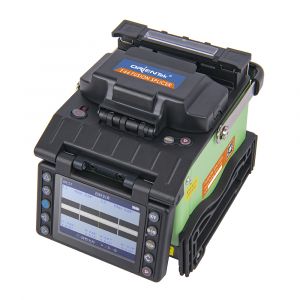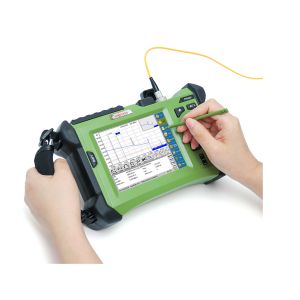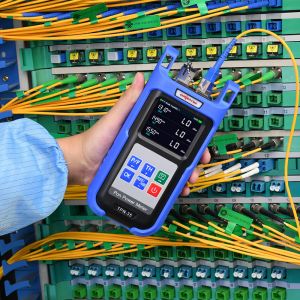EPON and GPON are two common optical fiber access technologies. They use optical fiber to transmit data and provide users with high-speed, large-bandwidth Internet access services. EPON is based on Ethernet technology, while GPON adopts the ITU-T G.984 standard. The two have some significant differences in architecture and working principles, making them more suitable for different application scenarios. As the demand for digitalization continues to grow, 10G EPON and 10G GPON OLT have emerged, providing more powerful support for high-bandwidth, low-latency applications. The emergence of these two technologies marks the continuous evolution of the optical fiber access field and lays a solid foundation for the development of the future digital society.
More details please add official account: whatsapp/ skype +8613625297051
EPON
Ethernet Passive Optical Network (EPON) is an optical fiber access network based on Ethernet technology. The core idea is to transmit data over optical fiber while using a passive optical network that eliminates the need to provide power to the devices distributed across the network. EPON adopts a point-to-multipoint topology, in which the core device is an optical line terminal (OLT), and the device connected to the user end is an optical network unit (ONU). The architecture of EPON consists of OLT, ONU and optical distribution network (ODN). OLT is the core of the network and is responsible for managing overall network traffic and communicating with ONUs. The ONU is located at the user end and is an optical interface device responsible for converting user end data into optical signals. ODN is an optical distribution network used to transmit optical signals between different OLTs and ONUs.
Uplink - When the user equipment sends data, the ONU converts the data into optical signals and transmits them to the OLT through the ODN. After the OLT receives the optical signal, it converts it into an electrical signal and transmits the data to the core network.
Downlink - The OLT receives data from the core network, converts it into optical signals, and transmits them to the corresponding ONU through the ODN. After receiving the optical signal, the ONU converts it into an electrical signal and delivers the data to the user terminal device. EPON has a wide range of applications in actual networks, especially playing a key role in urban broadband access, enterprise networks and mobile communication base station backhaul. For example, in urban broadband access, EPON can provide high-speed and stable network connections to meet users' needs for large bandwidth. In enterprise networks, EPON can provide reliable data transmission by simplifying the network structure and improving transmission efficiency. In addition, in mobile communication base station backhaul, EPON can be used to quickly and reliably transmit large amounts of data to support the development of mobile networks.
GPON
Gigabit Passive Optical Network (GPON) is an optical fiber access technology using the ITU-T G.984 standard. Compared with EPON, GPON has higher data transmission rate and more powerful performance. GPON also adopts a point-to-multipoint topology, and its core is the optical line terminal (OLT) and the optical network unit (ONU). The architecture of GPON includes OLT, ONU and optical distribution network (ODN), which is similar to EPON. As the core switching device, OLT manages the entire network and communicates with ONUs. As a user-side device, ONU is responsible for converting user data into optical signals. ODN is a distribution network used to transmit optical signals.
Uplink - When the user equipment sends data, the ONU converts it into an optical signal and transmits it to the OLT through the ODN. After the OLT receives the optical signal, it converts it into an electrical signal and transmits the data to the core network.
Downlink - The OLT receives the data from the core network, converts it into optical signals, and transmits them to the corresponding ONU through the ODN. After receiving the optical signal, the ONU converts it into an electrical signal and delivers the data to the user terminal device. GPON also has a wide range of applications in actual networks. In large-scale networks, GPON can provide higher bandwidth and more stable connections to meet users' needs for high-speed networks. In business environments, GPON's high performance makes it an ideal choice in enterprise networks, supporting efficient data transmission and communication. In addition, GPON also performs well in providing multimedia content, video conferencing, etc., providing users with a richer network experience.

10G EPON
10G EPON is a high-speed version of EPON technology designed to meet the needs of higher bandwidth networks. It uses 10 Gbps symmetrical uplink and downlink rates, providing greater data transmission capabilities than traditional EPON. The basic concept of 10G EPON retains the core idea of EPON, but adapts to the growing digital needs by increasing the transmission rate. The architecture and components of 10G EPON are similar to traditional EPON, including OLT, ONU and ODN. However, 10G EPON equipment requires higher processing capabilities and greater bandwidth to cope with high-speed data transmission and processing requirements.
Uplink - When the user equipment sends high-speed data, the ONU converts it into a 10 Gbps optical signal and transmits it to the OLT through the ODN. After the OLT receives the optical signal, it converts it into an electrical signal and transmits the high-speed data to the core network.
Downlink - The OLT receives high-speed data from the core network, converts it into 10 Gbps optical signals, and transmits it to the corresponding ONU through the ODN. After receiving the optical signal, the ONU converts it into an electrical signal and delivers the high-speed data to the user terminal device. 10G EPON is widely used in scenarios that have strict requirements for high bandwidth, such as data center interconnection, large-scale enterprise networks, and high-speed broadband access. In data centers, 10G EPON can support the rapid transmission of large amounts of data and meet the needs of cloud computing and big data applications. In large-scale enterprise networks, 10G EPON provides high-performance connections to support enterprise-level applications and large-scale data transmission. In high-speed broadband access, 10G EPON provides users with faster and more reliable network connections, meeting the urgent needs of modern users for high-bandwidth services.
10G GPON
10G GPON is a high-speed evolution version of GPON technology, designed to provide greater bandwidth and higher performance. Compared with traditional GPON, 10G GPON uses a symmetrical uplink and downlink rate of 10 Gbps to provide users with faster data transmission capabilities. This makes 10G GPON an ideal choice to meet high-density user, large-scale data transmission and symmetric service requirements. The architecture and components of 10G GPON are similar to traditional GPON, including OLT, ONU and ODN. However, 10G GPON requires higher processing power and larger bandwidth to support high-speed data transmission and processing.
Uplink - When the user equipment sends high-speed data, the ONU converts it into a 10 Gbps optical signal and transmits it to the OLT through the ODN. After the OLT receives the optical signal, it converts it into an electrical signal and transmits the high-speed data to the core network.
Downlink - The OLT receives high-speed data from the core network, converts it into 10 Gbps optical signals, and transmits it to the corresponding ONU through the ODN. After receiving the optical signal, the ONU converts it into an electrical signal and delivers the high-speed data to the user terminal device. 10G GPON has a wide range of applications in actual networks, especially in scenarios that require high-density and high-speed transmission. In large-scale user-intensive areas, such as city centers and business districts, 10G GPON can provide high-speed and reliable Internet access services to a large number of users. In large enterprise networks, 10G GPON can support large-scale data transmission and provide high-performance network connections. In addition, 10G GPON also performs well in mobile communication base station backhaul, video surveillance and other fields, providing strong support for various application scenarios.

In Conclusion
This article introduces EPON, GPON, 10G EPON and 10G GPON in detail. EPON and GPON are two different optical fiber transmission technologies. They are both based on PON (passive optical network) technology. PON technology is a fiber-based network technology that uses a single optical fiber to transmit signals to multiple users. OLT (Optical Terminal Equipment) is an important part of the PON network. It connects the ISP's core network and the user's ONU (Optical Network Unit) equipment. The main function of the OLT is to convert the ISP's data into optical signals and send them to the ONU device. The OLT is also responsible for managing all equipment in the PON network, including ONU and ODN (optical distribution network) equipment. 10G EPON and 10G GPON are upgraded versions of EPON and GPON, which provide higher bandwidth and faster speeds. 10G EPON and 10G GPON work similarly to EPON and GPON, but they use higher frequencies and more complex modulation techniques to achieve higher bandwidth and speed. 10G EPON and 10G GPON also support more users and longer transmission distances. The role of OLT in 10G EPON and 10G GPON networks is the same as that in EPON and GPON networks.
More details please add official account: whatsapp/ skype +8613625297051






